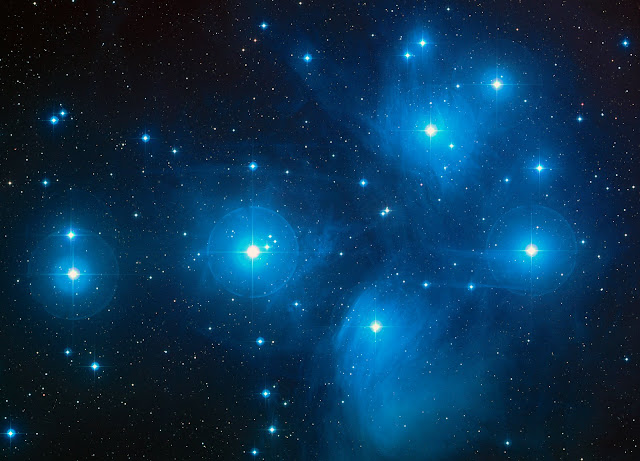The earliest beginning of a star is called a nebula. A nebula is a cloud of hydrogen and a few helium atoms hanging in space. Sometimes a nebula just stays at this point, but if the cloud gets thick enough, with enough hydrogen atoms close enough together, it can become a brown dwarf. A brown dwarf is a small star that is not quite big enough, so there is not enough gravity to start the nuclear fusion process. Brown dwarf stars hardly shine at all, but they're not very common either.
If the brown dwarf succeeds in attracting enough hydrogen atoms and packing them tightly enough together, then it turns into a main-sequence star - an ordinary star like our sun. Nine out of every ten stars you can see from Earth are main-sequence stars. Inside a main-sequence star, the pressure of gravity pushes hydrogen atoms together so they become helium atoms, and the extra energy released by this fusion process shoots out of the star and become heat and sunlight.

The red giant star Betelgeuse
(thanks to Hubble Space Telescope)
(thanks to Hubble Space Telescope)
A main-sequence star usually doesn't change for several billion years, but eventually it runs out of hydrogen atoms to turn into helium atoms, like a car running out of gas. When this happens, the main-sequence star turns into a supergiant star. These supergiants, or "red giants", are much bigger and cooler than regular stars. Two examples of supergiant stars are Antares and Betelgeuse. Supergiant stars still have nuclear fusion going on inside them, but they change helium atoms into carbon, or carbon into oxygen. A supergiant lasts about one-tenth as long as the main-sequence star did. (Read more at History for kids)











